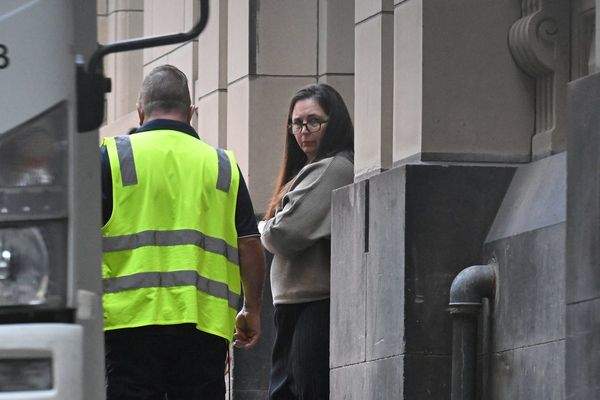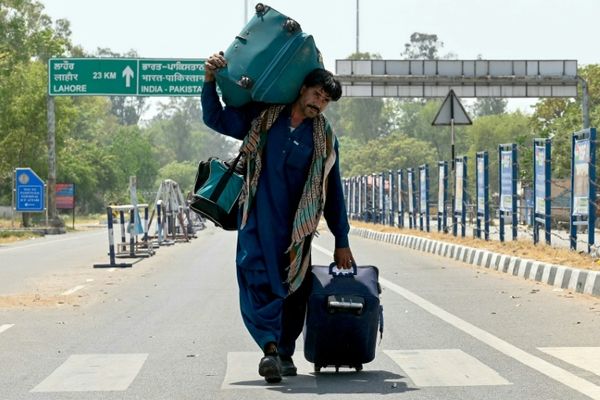
As the unofficial historian of San Pedro, the rough but charming working-class port of the city of Los Angeles, Angela Romero fields one question more than any other: where is the monument to Charles Bukowski?
German tour companies want to know. So do large numbers of casual visitors who routinely make the 25-mile trek from downtown LA to learn more about the cult writer, boozehound, and confessional poet of the damned who made San Pedro his final home.
And the answer, up to now, has always been the same: sorry, we don’t have one.
Lack of affection for Bukowski is not the problem, even if the mainstream literary world tends to look down on him as a cheap-trick populist, and his frank writing about bedding women – and standing in awe of “so much breast and ass” – doesn’t exactly jibe with our #MeToo cultural moment.

Rather, San Pedro has been slow to realize just how passionate an international following Bukowski still commands a quarter-century after his death at the age of 73. But Romero – curator of a virtual museum of San Pedro history – is determined to change that.
“Fans of Bukowski travel to San Pedro from all around the world looking for a way to feel close to a man whose words touched them so deeply,” she says. “They’re looking to experience even a small part of the town he chose as his final home.”
With support from San Pedro’s business leaders, arts community and city council district office, Romero has found a local sculptor with a long track record of producing public art to immortalize Bukowski in bronze. And she has launched a GoFundMe campaign to raise the $150,000 she estimates it will take to do him justice.
The campaign kicked off last weekend with a crowded 99th birthday party for Bukowski held at one of his favorite local coffee shops, Sacred Grounds, complete with poetry readings, testimonials from those who knew him, a cake, and an unexpected last-minute appearance by his widow, Linda Lee Bukowski, who declared herself “over the moon”.
A majority of the participants were women, none of whom expressed slightest misgiving about Bukowski’s outpouring of poems and autobiographical novels in which he portrayed himself as an existential hero making an idiosyncratic pilgrim’s progress through a world of flophouses, dive bars, cheap women and casual vulgarity. He claimed never to have written sober, saying the best writing came out of him like “hot turds” after a night of drinking.
“He definitely wouldn’t survive if he was starting out now,” Romero acknowledged. “But what people appreciate most is the realness in his writing … He was very honest about who he was and how he felt.”
Branimir Kvartuc, who works for the local city councilman, was similarly dismissive of subjecting Bukowski to any sort of #MeToo acid test. “He didn’t have any status over anybody,” Kvartuc said. “That’s the difference.”
Certainly, the love for his writing was palpable in the room. Andrea Kowalski, who owned the now-defunct Vinegar Hill independent bookstore, recalled throwing a birthday party for Bukowski while he was still alive – his last, as it turned out – and being endlessly touched when he showed up. She read a letter of Bukowski’s in which he wrote: “Women are strange. They are positive; they want to build swimming pools when you are still wondering … how the hell the water bill is going to be paid.”
Bukowski lived in penury most of his life and found redemption through writing, much like other Los Angeles authors dwelling among the defeated and the downtrodden: Nathanael West (who wrote Day of the Locust), John Fante (Ask The Dust) and John Rechy (City of Night). By the time Mickey Rourke played Bukowski in Barfly, a fictionalized movie version of his life that came out in 1987, he was already enjoying a late flowering of commercial success on a scale that most poets only dream about.
He moved to San Pedro in 1978, after marrying Linda, and settled into a relatively quiet existence of writing, hanging out in bars and coffee shops, and sneaking into bookstores where he made a habit of secretly signing copies of his books. Sometimes, admirers would see him walking with wine bottles clutched between his knuckles.

San Pedro, in those days, had the same rough-and-ready authenticity that had previously attracted The Doors to Venice Beach in the days when it was dotted with oil derricks, without a snake charmer or henna tattoo artist in sight. Many of San Pedro’s residents worked at the giant Port of Los Angeles, one of the busiest commercial docks in the world. “The authenticity is what drew him here,” Romero explained.
Now, though, San Pedro appears to be on the verge of a development explosion, including a Little Italy, a $150m waterfront makeover, and a $7m renovation of the Warner Grand theatre on Sixth Street, the center of the neighborhood’s arts district. And that, in turn, raises some questions about where exactly Bukowski’s statue will fit in when it is unveiled, as Romero and her supporters hope, in time for his centenary this time next year.
Romero favors a street corner known as the Plaza, where pink stone pillars carve a semi-circle out of a small parking lot. But Kvartuc, from the city council office, said that site was likely to fall victim to a wrecking ball and he would prefer to find a home for Bukowski that would withstand the changes.
A handful of graffiti artists, meanwhile, have not waited for a formal monument. A color portrait of Bukowski adorns the alley behind the old Vinegar Hill books building, and a handful of stencil portraits have been sprayed on to the windows behind an annex to the Grand theater which played a leading role in San Pedro’s punk rock explosion around the time Bukowski moved in. “What matters most,” a quote next to Bukowski’s portrait reads, “is how well you walk through the fire.”
This article was amended on 20 August 2019 to correct the cost of the renovation of the Warner Grand theatre, and the artist who did the window stencil of Bukowski.







